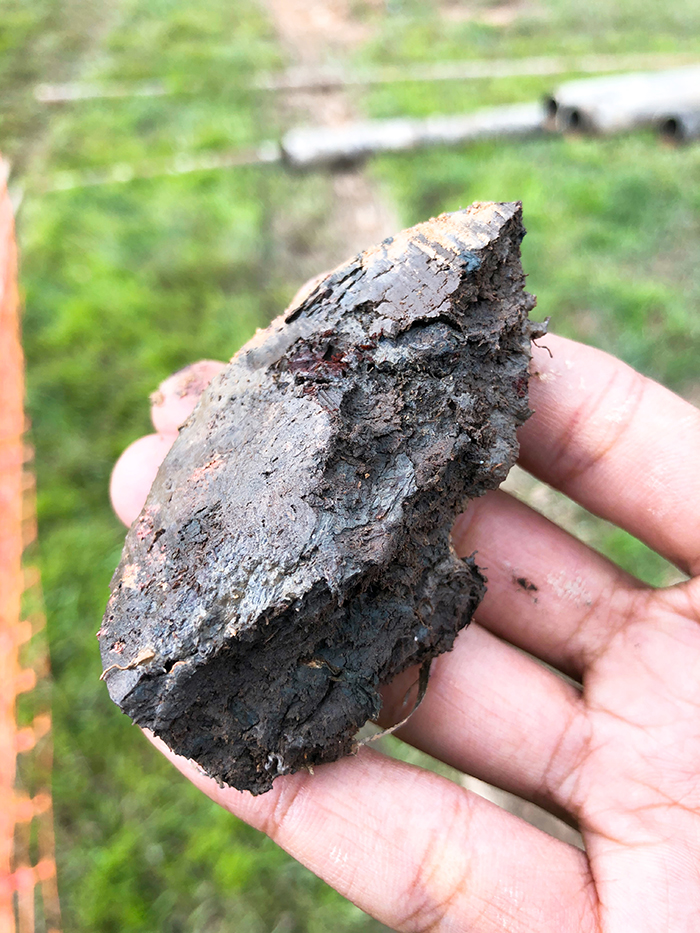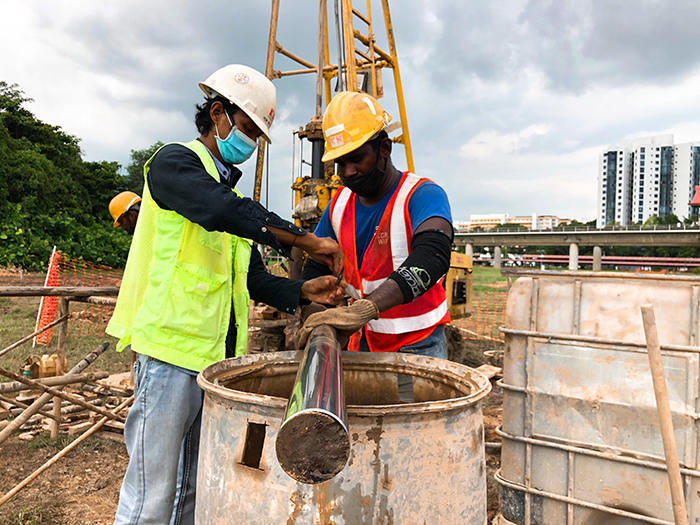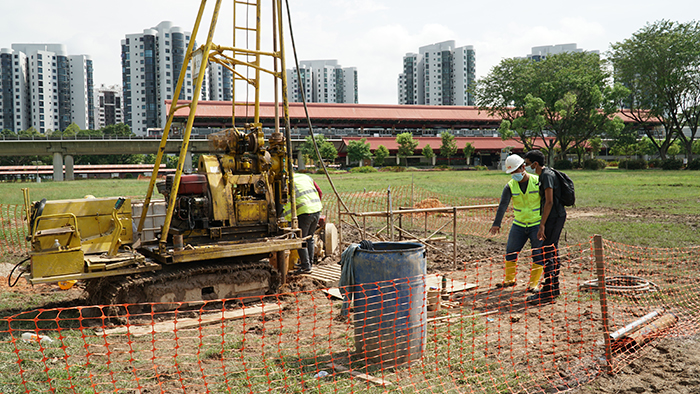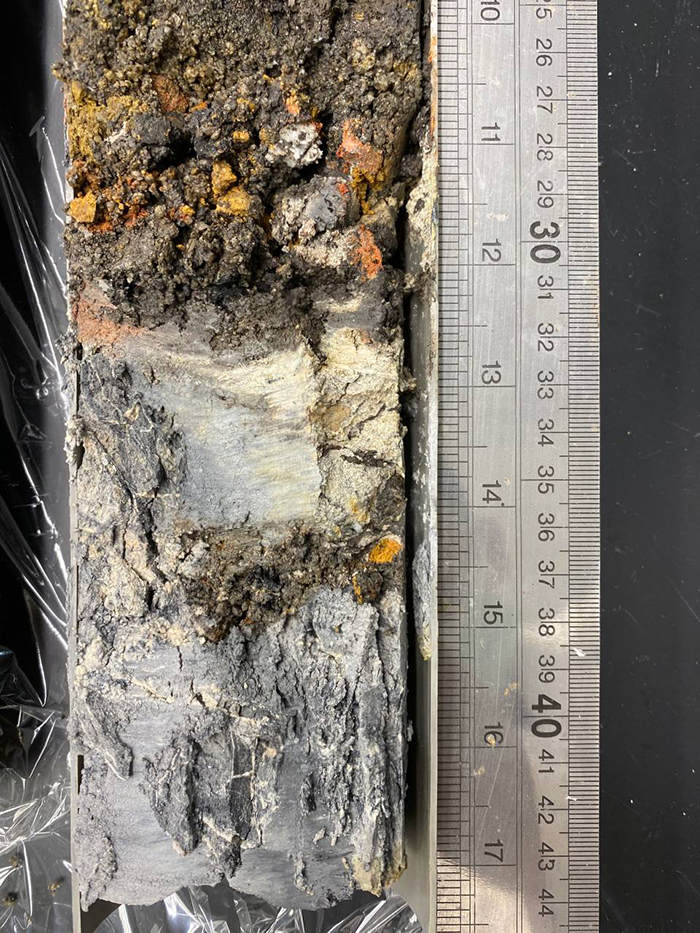In this interview series, we learn about the perspectives of the PhD students whose wide-ranging work contribute to the SEA2 Program and share what drives them in their research.
Underground sediments can serve as geological libraries that offer a glimpse into past environments such as bygone mangrove ecosystems and shorelines.

For one PhD student, in particular, this study into proxy indicators of sea levels in the last 10,000 years is a way of amalgamating his love of mangroves and recent interest in sea-level rise. Proxies are organic materials that can be carbon-dated to serve as age markers in paleo-climate science.
Yudhishthra Nathan, a second-year postgraduate student at the Asian School of Environment (ASE), is part of Professor Benjamin Horton’s sea-level research team, specialising in using geological proxies to reconstruct past sea levels.
Taking wood pieces trapped in the sediment cores at Jurong Lake, he carbon-dates the samples to get a picture of what could have happened to the sea level in the past and how the position of the mangrove would have changed vis-à-vis the coastline over the last 10,000 years.

“What we are essentially doing is examining mangrove sediments and how they have changed over time. It still strikes me how an innocuous piece of wood could be several thousand years old,” he mused.
“It is just a piece of wood, but it is really old and tells a story that is special to this part of the world.”
Yudhishthra’s interest in mangroves and climate change goes back to the time he was first introduced to geography.
“Since my secondary school days, it was a subject that I could see all around me and, whether it was rocks or urban development, it was something that affected our community one way or another. By the end of my Junior College journey, I had decided it was a career I wanted to pursue,” he said.
It was meaningful to work on big topics like urban development, climate change, or even world hunger for him, something which, he admitted, may sound lofty, but was very much grounded in reality as the discipline studied how such issues affect various communities.
“In particular, the study of climate change is varied – it ranges from studying atmospheric temperature change to urban mitigation solutions and sea-level research. I find it cool how people look at these different threads of research but at the end of the day are all trying to address the same issue.”

His interest in mangroves was sparked during his Bachelor of Environmental Studies (BES) days at the National University of Singapore (NUS) when he wanted to look at mangroves for his honours thesis, because they were such a unique ecosystem – mangrove trees are the only type of tree that can survive in saltwater or intertidal conditions.
"I wanted to work on mangrove vulnerability to climate change,” he said. “This led me to do an honours thesis on mangrove hydrogeomorphology, which is a fancy way of saying how mangroves interacted with water.
After that, I was still quite interested in mangrove vulnerability to climate change, and was talking to one of my NUS professors, Associate Professor Dan Friess, when he told me about Professor Benjamin Horton (at EOS), who does really cool work on mangroves and climate change, particularly sea-level research.”

His decision to pursue a PhD was also inspired by his stint with the Natural Capital Project, where he looked at the distribution of different coastal and marine ecosystems to Singapore.
“In the Natural Capital Project, I had looked at the different benefits that the coastal and marine environments provide and helped the team map it out – so I was like a mapmaker for the publications and our report, which is going to be published later this year.
It gave me a sense of what the research world was like.”
During a short graduation trip to Bali in 2019, he had also gained fresh perspectives on the connection between environmental sciences and communities in Southeast Asia. “I was lucky to climb up Mount Batur there, which opened my eyes as I got to meet people who lived at the foot of the volcano,” he recalled.
“Our guide had a family farm on the slopes of the volcano, and it got me thinking about how people depended so vulnerably on their environments for sustenance,” he said. “Unlike us, they also depended on their environment for food, both commercially and for subsistence. So, I am really glad to be part of the National Sea-Level Program and SEA2 Program, which sets its sights on places further afield Singapore in the Southeast Asian region.”
With such inspiration and groundwork set up for his thesis project, what would the next move be in his PhD journey?

“Moving forward, we hope to examine pollen found in those sediments, from the trees and flowers that would have existed years ago to gain a better sense of what the environment then could have looked like.
Having a mix of lab work, desk work, and fieldwork has made his work enjoyable so far. “It’s been really nice that I could go out into the field, not only with Prof Ben’s lab but also with Assistant Professor Aron Meltzner’s lab. This combination of different modes of work keeps me going.”
“Half of the office (where Yudhishthra is based in ASE) is also from BES,” he chimed, “and it’s been nice to have that sense of community and comfort in working with people with shared experiences. It has also been wonderful that we get to meet people from across the world working on their PhD here.”
When asked if there is a song that represents his research journey, he divulged, “Hello, Anxiety” by Phum Viphurit, because contrary to the song’s title, it’s all about getting comfortable with uncertainty, which I’ve found to be rather apt in the course of this journey.”